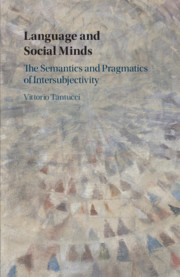4 - The Intersubjective Gradience Model Applied
From Immediate (I-I) to Extended Intersubjectification (E-I) Throughout Ontogeny
from Part II
Published online by Cambridge University Press: 26 March 2021
Summary
This chapter is centred on interlocutors’ ability to spontaneously construe intersubjectified utterances throughout ontogeny and first language acquisition. The diachronic continuum illustrated in Chapter 3 is also at stake throughout children’s ontogenetic development. Children acquire the capacity to spontaneously express immediate intersubjectified (I-I) polysemies of a lexeme before they develop the skills to convey extended intersubjectified usages (E-I) of the same form. In Section 4.1 I introduce the application of the gradience model in first language acquisition and theory of mind research with reference to children's usage of the Italian construction guarda ‘look’. Section 4.2 focuses on the Mandarin construction 你看 nǐkàn ‘look, you see’ and the way new intersubjectified polysemies of 你看 nǐkàn (hinging on mirativity and opinion elicitation), significantly emerge at later stages of development than directive usages of the same form. In section 4.3 I discuss the acquisition of the Mandarin post-verbal 过 guo. Interpersonal evidential polysemies of 过 guo are spontaneously mastered by children around the seventh year of age, e.g. comparatively later than other usages of the same form. Section 4.4 is finally dedicated to the first language acquisition of the pre-nominal such and children’s progressive ability to use express generic reference to objects, entities and events to which they ascribe collective recognition. This extended intersubjective function of such emerges later than other polysemies of the same form aimed at merely establishing joint attention.
Keywords
- Type
- Chapter
- Information
- Language and Social MindsThe Semantics and Pragmatics of Intersubjectivity, pp. 109 - 142Publisher: Cambridge University PressPrint publication year: 2021



